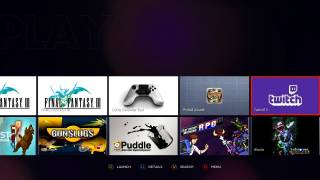The Struggles of the Indie Console
By gamer_152 10 Comments
I think it’s fair to say at this point that the Ouya isn’t doing fantastically. Since its retail release a month ago, it’s received a justifiably cold reception from both critics and the gaming community, and achieved less than spectacular software sales. I want to address that here, although before we talk about the relevant criticisms of the system, I think it’s worth noting that not every argument pointed in the Ouya’s direction has been valid. In fact, a lot of the poorer criticisms brought against the Ouya seem to be the same flawed points that were used against the Wii U in the past.
The Bad Critique

Firstly, attempting direct comparison between the Ouya and the other consoles out there doesn’t really make sense. There are plenty of areas in which we can and should discuss how the Ouya levels up to other machines on the market, but attacking it because, for example, it’s not as powerful as Microsoft and Sony’s next consoles is missing the point. The Ouya may not have 8 gigs of RAM and an octuple-core CPU, but it’s also not meant to run brand new AAA games or cost customers hundreds of pounds to purchase. Condemn the Ouya for what it is by all means, but keep in mind that not all consoles are trying to be the same thing.
Secondly, there were people who were declaring the downfall of the Ouya from early on without solid evidence and reasoning. Many of the specific problems with the Ouya are things that were difficult to foresee, and if there’s anything that the Wii should have taught us, it’s that predicting the future of consoles is a lot harder than it looks on paper, especially when it comes to manufacturers trying out new things that nobody else has done. A surprising number of people also seem to have revelled in the idea of the Ouya crashing and burning. I think it’s a mixture of sadism over the failure of products or companies, and people wanting their opinions on the console being validated in a larger way. There are a lot of people, me included, that are coming at the Ouya from a different angle though. I want the Ouya to be good, and I think there’s potential in at least some of its ideas, so it’s especially disappointing to see it failing at what it’s trying to do.
The Goal
Games as a medium owe a lot to the explosion of the indie scene over the past several years. While the world of AAA has played it increasingly safe and the B-tier of games has arguably become a thing of the past, this surge of indie development has been a means for people to create and release games without having to be part of multi-million dollar companies, has allowed game makers more creative control, and has given us games that are on the whole more original, experimental, and niche than the games we’re seeing from the big developers and publishers. None of this would have been possible without the indie-friendly publication and distribution methods that have taken over PCs and mobile devices in recent times, but the console market has still remained very much in the hands of the people holding the money. The console manufacturers publish indie games on their systems, but only a limited number of indie games, and often with restrictive policies and costs imposed on those that they do. Xbox LIVE Indie Games exists for those who want to self-publish on consoles, but there are still various freedoms that aren’t granted to developers on that platform, and for a long time now Microsoft have been trying to pretend that XBLIG just doesn’t exist.

At least in theory, the Ouya could have been the machine to finally give indies control in the last place where they really lacked it, and bring a wave of open and creator-driven independent development to the console market, similar to the one that swept the PC and mobile devices. It was an ambitious goal, but a worthwhile one that made a significant number of people want to throw their support behind the system. There’s also something rather humble and underdog-like about the smaller companies in the industry and their endeavours to bring us great games in a world dominated by the AAA. In practical terms however, I think we forget how hard it is to build a games console.
The Faults
Even behemoths in the technology industry like Microsoft and Sony have to utilise expert engineers and make a loss on the hardware they’re selling to deliver it to gamers, and they’re far from invulnerable to serious slip ups when they do so. Just think back to the RROD fiasco. So the fact that the people behind the Ouya managed to manufacture and distribute it in the first place is kind of amazing, and the areas in which they ran into difficulties are understandable, even if they’re not excusable. On the physical end, powered down consoles have been turning themselves on, buttons have been sticking, control sticks are reported to have poor dead zones, controllers don’t have a “Start” button equivalent, many have criticised the feel of the controllers in general, and it’s been said that setting the console up can be a finicky business. A couple of these issues were meant to have been fixed between the Kickstarter release of the console and the retail release, but many report that the problems have persisted. On the OS end, users are finding that Ouya controllers have a significant lag on them compared to third-party controllers, that console interfaces slow down in places, that’s there is no multiplayer network on the console equivalent to Xbox LIVE or PSN, and that the console uses cluttered and impractical interfaces where all the games have just kind of been collected in a virtual pile and players have been giving the task of finding what they need in the resulting mess.
Then there are a series of problems not directly to do with the console experience, but that none the less remain worrying. Even when the Ouya was speeding its way to retailers there were Kickstarter backers who had yet to receive the consoles they’d paid for, additional controllers are being sold for half the price of the full console, and few games press outlets seem to be talking at any great length about the Ouya or its games. That last one is an especially big problem considering the Ouya is largely reliant on word of mouth for marketing, and because the marketing from the people actually behind the console has been shaky at best. If you’re wondering “What marketing?” that’s a certain portion of the problem to begin with, but their tagline for the console “Get Some” seems outdated and out of step with the tone many indie games are going for, as did their offer of a $13.37 (lol, get it guys? So leet) coupon to those who didn’t receive their console in time. A recent advert for the Ouya also depicts their potential audience as a grown man sat in his underpants, wallowing in his own vomit, getting ridiculously angry about video games. Ouya manufacturers Boxer8 pulled the ad, saying it was just an experiment, but the damage was already done. And yet, even this huge, worrying list of problems is still secondary the Ouya’s central issue, its games library.

Most of the notable titles on the system are games like Final Fantasy III, Canabalt HD, and You Don’t Know Jack that have already been released on other, more appealing systems, and ports of some games like Shadowgun have been said to run outright poorly. On top of this, there are next to no big name exclusives for the system and many of the games on there are just not particularly well-made. Scrolling through the games listing for the Ouya is a bit like browsing a second-rate store for iOS games, and this is no doubt due in part to the lax quality control on the platform. While there are a lot of good things about having such an open place for people to put their games, even something like Steam Greenlight takes quality control pretty seriously, and we’ve seen what’s happened to services like Xbox LIVE Indie Games when content has just gone unchecked. On the other hand, and I don’t intend this to sound mean, but you start to wonder how many games there’d be left on the Ouya if they were running a tighter ship.
The Future
Boker8 CEO Julie Uhrman assures us that things will pick up for the console once more people start buying it and more developers are attracted to it, but this logic runs on the assumptions that more people are going to buy and develop for the console. With a lack of good games and a boatload of other issues, what’s the incentive for people to buy the Ouya? And on the other end of the spectrum, if you’re a developer, what’s the incentive for you to release your game on the Ouya?
Boxer8 haven’t given any figures on what the install base for the console actually is, but we do know that on average only 8% of users who play free trials of Ouya games go on to buy the full games, and that only 27% of users who have bought the console have purchased a single game for it. I’m almost willing to give Ouya the benefit of the doubt and say that the 8% is not so abysmal, considering that developers on the console are obligated to offer free trials of all their games, and I don’t know what the average trial-to-purchase ratio actually is for a game, but that second number can’t be good. I’m always wary about making predictions for where consoles are going, but it seems to be a sizeable warning sign for developers when only about a quarter of people who have the console are even buying anything on it. In light of this, you’d want to think carefully about putting your game on it in any form, but making your title an exclusive for it seems like an outright suicide mission.

Uhrman has said that the developers of Towerfall and Hidden in Plain Sight would object to the idea that you can’t make money on their platform, but these are a couple of the most successful games for the system, they don’t represent the average title. Some developers have even been reporting that they’ve only made a few hundred dollars on the Ouya. Boxer8 are no doubt aware of their problem, attempting to combat it with their “Free the Games” initiative, offering to fund dollar-for-dollar the same amount any game can raise on Kickstarter. The catch is that games must reach both their funding goal and a minimum of $50,000 to receive Boxer8’s cash boost. In addition, games must pledge themselves to being exclusive to the Ouya for six months, and that sticks even if the games do not reach their funding goal. Not only is this a problem because the Ouya is probably not the platform you want your game to be exclusive for, but it also seems to be in direct contradiction of the Ouya’s philosophy of being an open and free space for developers. Ironically, the “Free the Games” fund doesn’t leave games very free, unless they’re otherwise going to fail to reach funding, in which case there is a question about how much demand for those games there is anyway.
Whatever steps they’re taking, the true measure of the Ouya’s future is going to be its upcoming releases, and at present the release list is looking both rather barren and devoid of anything that recognisable. If there’s a way for the console to dig itself out of its current rut, it’s far from obvious and most likely incredibly difficult to pull off. The Ouya might well be trapped in an uncomfortable loop where games aren’t being made for it because gamers aren’t buying it, and gamers aren’t buying it because games aren’t being made for it. Thanks for reading.